Wildlife Trafficking, Friendship, and the Uniting Power of Cheetahs
-

- by Toni Piccolotti July 31, 2019
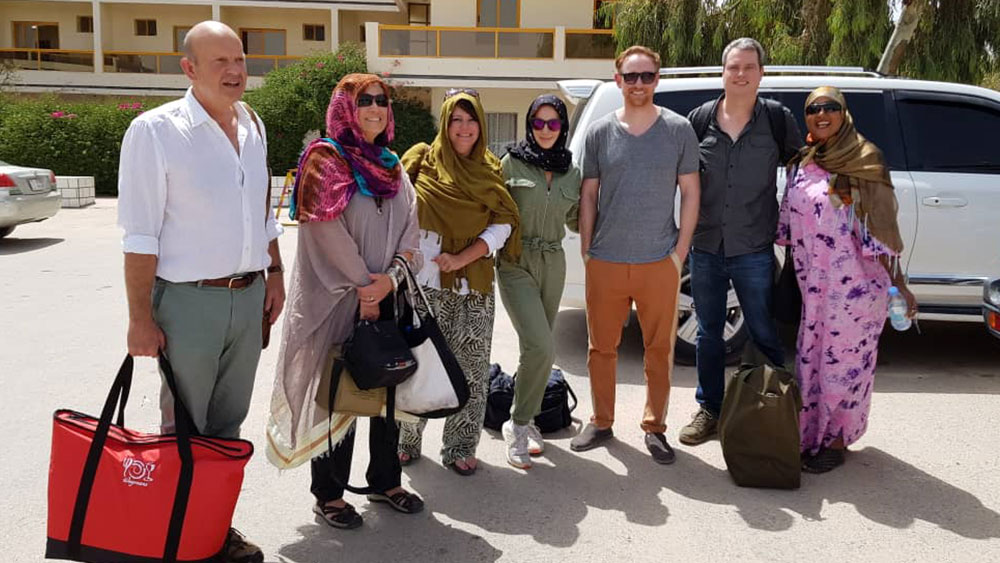
Dr. Laurie Marker, CCF Founder and Executive Director, recently invited me to accompany her on a trip to Ethiopia and Somaliland to see firsthand the impact that wildlife trafficking has on cheetahs in the horn of Africa. Dr. Marker has been overseeing and funding the care of at the time 23 cheetah cubs (the number has since grown to over 30) that have been confiscated by Somaliland officials. These cubs are currently being kept in a safe house in the capital city of Hargeisa. James Young, environmentalist, and designer of the Born Free Wildlife Sanctuary in Ethiopia joined us on the trip.
I met up with Laurie on May 24th in Addis Ababa, capital of Ethiopia. I arrived at the Hotel Marcen in the middle of the night and sat in my very nice room marveling at how it was that I came to be included on this journey. To be honest, I am not much of a world traveler, and this story is not just about wildlife trafficking. This is a story about friendship and cheetahs, and it began in September 1976.
I first met Laurie Marker as an 18-year-old, fresh out of high school, and eager to find work with wildlife. Laurie was head of the clinic at Wildlife Safari, a 600-acre drive-through wildlife park located in Winston, Oregon, not far from my hometown of Roseburg. Wildlife Safari, which opened for business in 1972, had recently become known as a successful breeding center for cheetahs. In those days, the park had drive-thru lion and tiger enclosures, and I was hired as a tower guard, the person whose job it was to see that lions and tigers stayed in their habitat and guests stayed in their cars. Sitting in a tower 8 hours a day watching big cats roam relatively freely was an amazing first job, but my heart was with the cheetahs. I soon realized that to work with cheetahs, I had to get Laurie to notice me, so I began volunteering in the clinic nearly every day. My tactic worked, and before long Laurie did hire me, and my life with cheetahs began on that day.

Even then, Laurie was focused on cheetahs. Back in the mid ‘70’s women in the US were just getting a toe in the door of the traditionally male occupation of captive management of wildlife. Laurie wasn’t too keen on that policy and actively worked to change it. Before long she was given the responsibility of managing the cheetah breeding compound along with the clinic. I remember the chilly day in late fall that Trian gave birth to a litter of five cubs. One of these, Khayam, became Laurie’s first hand-reared cheetah. It was December 4, 1976, now known as International Cheetah Day in remembrance of Khayam. A year later, Laurie and Khayam traveled to South West Africa (now Namibia), to determine if a captive cheetah could be safely returned to the wild. I’m confident when I say that this was when Laurie fell in love with Namibia and made her lifelong commitment to saving the cheetah.
I worked for Laurie for several years, and during that time she taught me that a person can accomplish anything if they put their mind to it. She helped me develop confidence that I didn’t know I possessed. I look back on those years as some of the best of my life. Sharing a passion with someone, and working hard under difficult conditions, can lead to a profound connection. We were both just getting started on our cheetah journey, and though our paths would soon diverge, our friendship continued. When I decided to move on from the Safari, Laurie helped me get a position as cheetah specialist at White Oak Plantation (now White Oak Conservation Center), in Yulee, Florida. White Oak had acquired a few cheetahs, and I was hired to get the breeding program established. I worked at White Oak until 1989. At that time, I returned to Oregon, thinking that I was taking a brief hiatus from cheetah keeping. That hiatus lasted over 20 years. During that time Laurie Marker went on to become the leading cheetah researcher and conservationist in the world.
The fact that Laurie made saving the cheetah her life’s work is no surprise to anyone who knew her from her youth. I could write at length about those early days at the Safari, how hard we worked and how much fun we had. When times were challenging, which was frequently, we would say… “if I ruled the world…” and the first thing on the list would be… “make the world safe for cheetahs.”
Now fast forward twenty years. I had become dissatisfied with my second career in the book business and decided the time was right to return to my true passion, working with animals. In 2011, the Jacksonville Zoo was gracious enough to offer me a mammal keeping position, and even though I had been absent for decades, I settled right into my new job, and the years flew by.
I had been following Laurie and the creation of CCF since 1990 when she founded the organization. Though I had always wanted to visit her in Namibia, the opportunity never arose. When she first left the country, we communicated via letter and the postal service, somewhat outdated now, but at the time our only option. Busy schedules intervened, and we lost touch. Our paths didn’t cross again until 2016 when Laurie came to Jacksonville on her annual spring fundraising tour. We were able to visit briefly at the zoo before her lecture, and I was amazed at how little she had changed. She looked exactly as she did over 25 years ago! Though we didn’t have much time together that day, we covered a lot of ground, and I felt our connection was still there. During the next three years, social media, and Facebook specifically, made following conservation organizations such as CCF easy and rewarding. And it was on Facebook that I first learned about the trafficking of cheetah cubs in the horn of Africa. Stealing cheetah cubs from their mothers to sell into the illegal pet trade is nothing new. The wealthy class in the middle east considers a pet cheetah to be a status symbol, and the desire and demand for these animals are growing. Last summer I began noticing Facebook posts of CCF’s, detailing the confiscation of several cheetah cubs by Somaliland officials. The government of Somaliland has sought CCF’s and Laurie’s help over the course of the past several years. Initially, there would be only a cub or two. But last year those numbers took a dramatic increase. By the fall of 2018, they had 13 cubs, all arriving with serious illnesses or nutritional disease, and in need of critical care.
In my job as a keeper at the zoo, I primarily care for African mammals, which includes our cheetahs. Though the Jacksonville Zoo and Gardens does not have a cheetah breeding program, I keep up with the breeding programs around the country. In October of 2018, White Oak Conservation Center hosted the Cheetah Health Conference and the Cheetah SSP meeting. Karen Meeks, Carnivore Manager at White Oak, invited me to attend. I have known Karen since 1989 when she was hired to take my position when I left White Oak. Though we only worked together for a few weeks, we have maintained a friendship over 30 years. The power of the cheetah to bond and influence people cannot be overestimated. Karen sent me an email a few days before the conference to let me know that Laurie was going to be at the meeting.
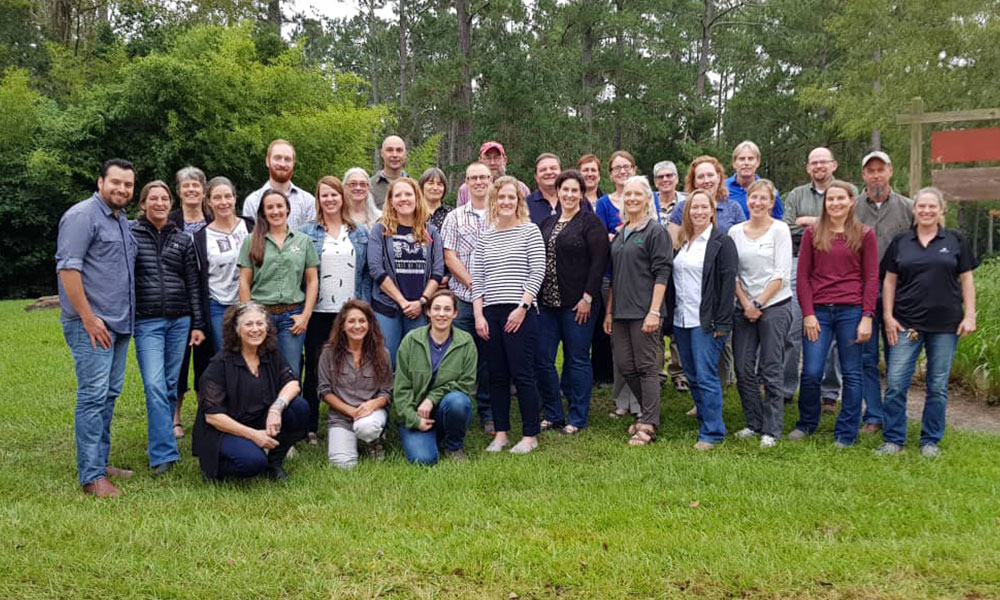
The meeting brought together cheetah people from all over the world, and I felt fortunate to be included. However, for me personally, having the opportunity to visit with Laurie was the highlight. We had time to sit and relax and truly reconnect with our shared past. And I now had the chance to ask about those Somaliland cubs. What was to be their fate? First and foremost, they need to be housed safely and brought back to health, and this was happening. But I asked what the next step was, and how could I help? Laurie said, “go to Somaliland”. At the time, that seemed impossible for me, I had a full-time job, lots of personal responsibility, etc. But the seed was planted. After the conference, I couldn’t stop thinking about those cubs. As the months went on, more cubs were confiscated. And during those months Laurie and I did communicate. I began to believe it might be possible to make that trip, but I needed more information, and Laurie was difficult to track down. Then, I read Laurie’s Earth Day blog, which mentioned the EarthX Fair in Dallas, and that she would be there on April 27th. In an amazing coincidence, I was going to be in Dallas on April 27th! Of course, I arranged to meet up with her. We didn’t have much time, but she did, again, tell me I could help by going to Somaliland. She was going to Hargeisa in June, and I could meet her there. A plan, now to put it in action.
I returned to Jacksonville thinking I had several weeks to prepare for the trip, but an email from Laurie brought the date up to late May. Three weeks! Quickly, arrangements were made, supplies were acquired, information was learned, and bags were packed. I boarded the plane full of anticipation, not knowing exactly what to expect, but sure it would be an unforgettable adventure.
The flight to Addis was long and tiring, but I arrived at my destination without a hitch. A prearranged taxi was waiting for me, and within minutes I was safely delivered to the Hotel Marcen. By 2 AM I had settled into my room, and as the stress of travel melted away, I began to think of what it was that lead me here. What is it about the cheetah that inspires such lifelong devotion in people? I have been fascinated by cheetahs since I was a child, long before I saw one with my own eyes, and that fascination has not waned. Soon I would see my friend Laurie and begin what would become one of the most interesting and educational experiences of my life.
That first day, Laurie met up with me shortly before noon when she returned to the hotel from a meeting at the US Embassy. She had come to Addis two days before me to meet with various Ethiopian government officials about wildlife trafficking issues occurring in the Horn of Africa. She had no meetings scheduled for the afternoon, so we got in a cab and headed to the National Museum to pay a visit to Lucy, oldest known humanoid, discovered in Ethiopia in 1974. Back at the hotel, Laurie got a surprise phone call, and we were off to an impromptu meeting at the African Union with a woman named Leah who works in the Agricultural department. Traveling around the city by taxi allowed me to get a good look around. Addis Ababa is huge and sprawling, home to more than 10 million people. It’s a mix of traditional and modern; large buildings going up on seemingly every corner, donkey-drawn carts and free-roaming goats intermingling with dense car traffic, and people on foot, everywhere. That evening I met James Young, and the three of us went to dinner where we were joined by several of Ethiopia’s wildlife conservationist. James worked for many years in Ethiopia and seemed to know everyone who worked in conservation.
The next morning, James drove us to the Enessa Kotteh Wildlife Center, located about 90 minutes outside the city. The center is run by Born Free UK and is home to 8 lions and 10 cheetahs, all primarily from the illegal wildlife trade. Set on a beautiful, green rolling hillside, the facility has many large naturalistic enclosures for their cats, with plenty of room to grow. The sanctuary stands in stark contrast to the Lion Park located in Addis. This small zoo has ten lions, all kept in tiny concrete pens and housed alone. There aren’t many zoos in this part of the world, and I doubt if there are any official regulations concerning the care of captive animals. It is difficult not to be critical when a zoo is allowed to operate with these conditions, but really, it was not so different from the zoos of the US just a few short decades ago. I am hopeful that progress can and will be made.
Sunday, May 26th, Laurie, James and I left Addis behind and arrived in Hargeisa late that morning. The republic of Somaliland is Muslim, and all women must dress according to tradition. When in public, a woman covers all but her face and hands. Before disembarking, Laurie and I donned our scarves and the three of us stepped into the warm sunshine of Hargeisa. We were met by a woman from the government named Noora, who took us to the VIP lounge, processed us through customs, then escorted us to our hotel, the Maan Soor. I didn’t realize we would be so well cared for but soon learned that Laurie had been invited by the government. The next few days would prove to be fascinating as I went with Laurie and James to many government meetings. Resolving the question of what’s to become of the 23 cheetahs and all those that surely will follow is the purpose of Laurie’s visit.

Later that afternoon, Nujuum (Neju) Jimi, cheetah caregiver, and veterinary student, picked us up and drove us to the safe house. At last, we meet the cheetahs! The safe house is a walled compound approximately 1/3 acre in size. The walls are 8 feet high with razor wire coiled around the top. Inside are many wood and wire pens housing 19 of the cheetah cubs. The other four older cats are at another house a block away. The cubs range in age from 3 to 18 months, some living alone, others in groups up to five. All appeared healthy and well cared for but need larger enclosures. We spent a few hours getting acquainted with Neju, who lives at the compound, providing round the clock care for the animals. Neju and I soon found our common ground, and I believe the power of the cheetah to unite has forged another friendship. Neju took us to each enclosure and told us of each cat’s history. It became clear that our first priority would be to design and begin building, larger pens, each with access to an exercise yard. James, project manager and facilities designer, set to work on a blueprint.
Monday began a week of meetings. First, we met with the Foreign Minister, Yasin Hagi Mohamoud, and his staff. Laurie proposes to build an interim facility, larger than the current one, to house the growing population, and then to secure land for a permanent sanctuary, similar to CCF in Namibia. The minister listened politely but made no recommendations. Next on the agenda was meeting with Shukri, Minister of the Environment and Rural Affairs. Shukri and Laurie had met before, and Shukri has visited the safe house. She is committed to finding the best solution for the cheetahs. As I sat in these meetings, it became clear to me that the issue, though straight forward at first glance, is much more complex when looking under the surface. Building a permanent sanctuary is an enormous job that will take years to complete. Just finding the land will be challenging. Materials for building are difficult to find, and most will have to be imported. And before any of that can begin, the interim facility must be built, as the current cheetah population is rapidly outgrowing their home.
On Tuesday we took a break from meetings and explored the countryside. Guenther Wirth, President of Heritage Somaliland, has partnered with Laurie in caring for and helping to manage, the confiscated cubs. He has a sanctuary for antelope about 70 KM outside of the city, and he invited us on a tour. The city fell away quickly to reveal a wide-open landscape. This semi-desert land has a stark beauty. The land is mostly flat, with small hills placed seemingly at random. The soil is very rocky and difficult to work but grows various types of acacia scrub well. I’ve been told it is quite fertile when water is available. All along the drive, we saw large herds of camel and goat. Many Somalilanders are nomadic, and tending livestock has great value.

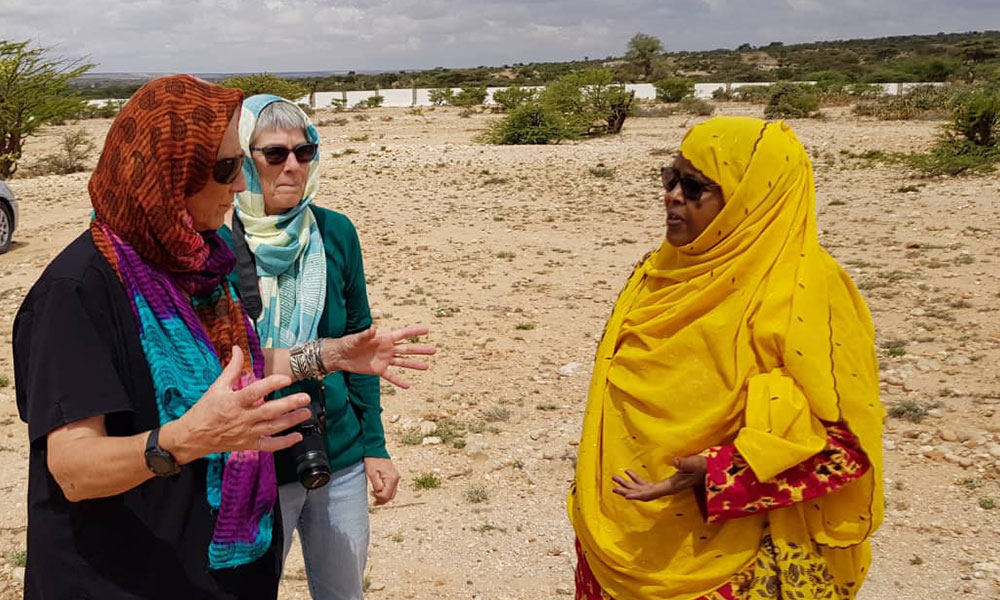
On Wednesday, Laurie and James had meetings with the Minister of Trade and Industry, and at the Turkish Embassy. I bowed out, preferring to spend the day with Neju and the cheetahs. I am happy that Laurie has included me in these meetings. Meeting with officials of a foreign government is an experience new to me. I admit I felt a bit out of my element and welcomed a day with Neju. James had completed his plans for the new enclosures, and work was to begin that morning. Guenther employs several young men, and they were put to work at Guenther’s place, building the modular frames for the new pens. Lumber, fence wire, and building supplies had been purchased and delivered.
That evening we returned to the hotel early, had a nice meal, then met in Laurie’s room to plan the next day. We met every evening in Laurie’s room, and our prep for the meetings and conversation of our progress often lasted well past midnight. Laurie and James would work on a presentation, and then send it off to CCF staff for fine-tuning. Getting ready for these government meetings often felt like an endurance race! Throughout our stay, we had been expecting word from the government that the president would like to meet with us. Laurie was really hoping for that meeting, but our time was running out.
Thursday was quite busy. We did get started on the new enclosures, but it became clear that we needed more help. Laurie contacted friends of hers in Saudi Arabia, Kitty and Brian Johnson. They were able to arrange a flight and would join us on Saturday, another testament to the cheetah’s power to unite.
The holy month of Ramadan would soon be coming to a close. Neju’s mother invited us to dinner at her house on Thursday evening. During Ramadan, Muslim’s do not eat or drink from 4 AM until sundown, when they break the fast. Neju and her mom prepared a wonderful meal for us. Afterward, Neju treated us to the traditional Ethiopia coffee ceremony. The evening was very special. Everyone we met was warm and welcoming to us. There are not many foreigners in Somaliland, but we were made to feel at home.
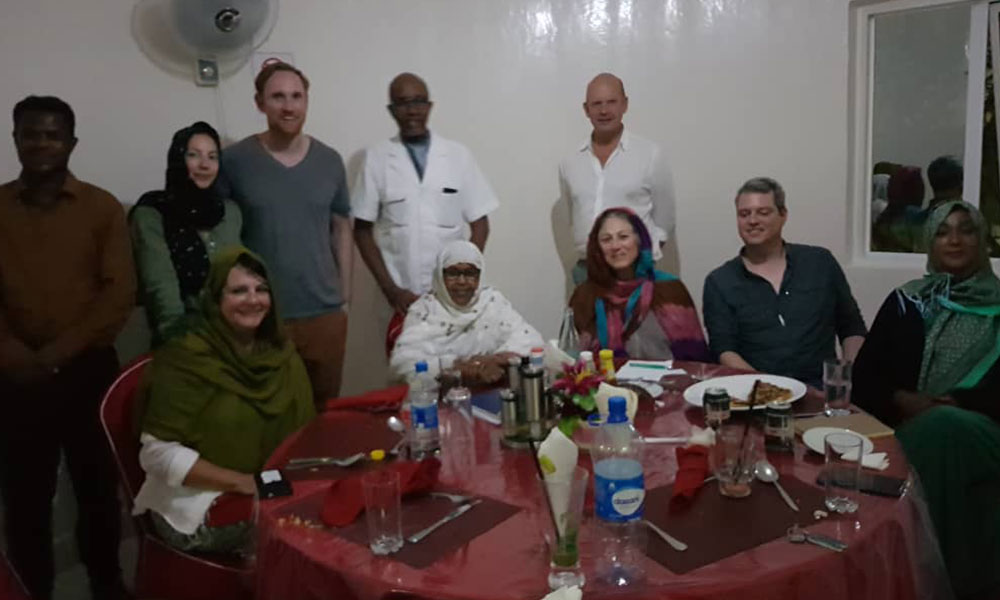
On Friday, James had to return to Addis. I was sorry to see him go as I had enjoyed his company but knew he had other obligations. Not long after he left, Laurie got word that we were to meet with the president that evening, at 7:30. I was a bit nervous, but Laurie seemed unfazed. During this meeting, we would learn the fate of these cheetahs. Noora picked us up in her car and drove us to the foreign minister’s office. We then followed his car to the presidential estate. We were escorted into a meeting room where president Musa Bihi Abdi greeted us with a warm smile and shook our hands. Most people of Somaliland speak two languages, Somali and English, and English was spoken at all our meetings. Shukri and the Foreign Minister were present. The president didn’t have much time and asked Laurie to speak. She talked enthusiastically about the need to keep the Somaliland cheetahs in Somaliland, about the necessity of building a permanent sanctuary for these animals, about the need for education and bringing an end to the trafficking of these animals; all the things she had been talking about in all the meetings this past week. Then, President Musa spoke. Six cheetahs were going to be allowed to be taken to South Africa by the Aspinall Organization. This was decided and not open for debate. The remaining cheetahs would stay in Somaliland in Laurie and CCF’s care. The government would provide land for the interim facility, and land for a permanent sanctuary. It was a bittersweet moment, as we had hoped all the cheetahs would stay in their homeland. However, Laurie did persuade the government to provide for a much-needed sanctuary, a home for these displaced, unfortunate victims of wildlife trafficking.
On Saturday, with the government meetings behind us, we focused on building the new enclosures. We had many helpers. Brian and Kitty had arrived, and friends of Neju’s and Guenther’s workers had joined us. We built the first run and moved cats into it. They now had space to run, to stretch their legs, to play. Sunday morning, we continued our work. Laurie and I knew we wouldn’t have enough time to complete this project before our flight out that afternoon, but we also knew there were many people there committed to seeing it through.
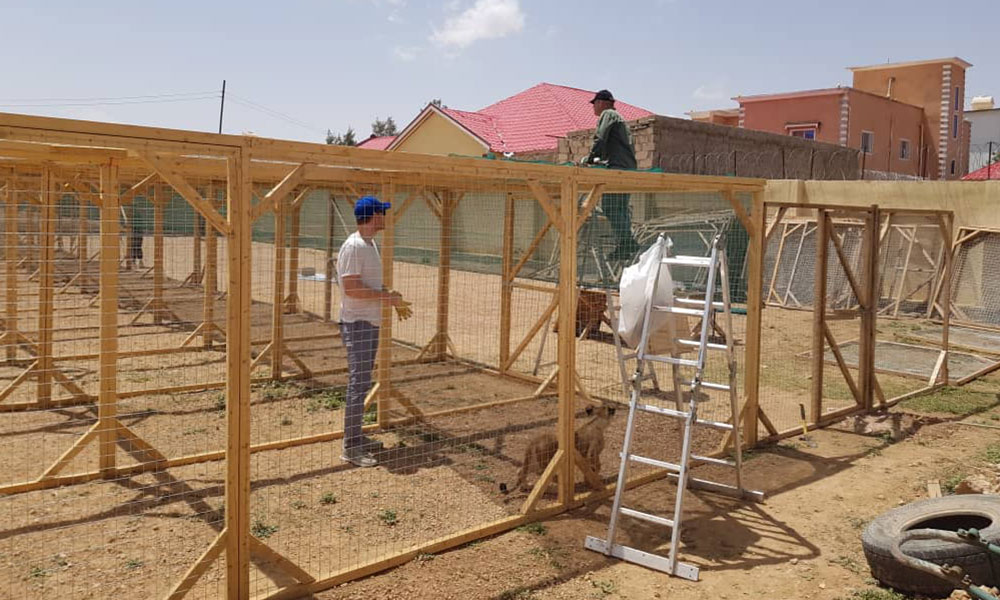

I spent one week in Hargeisa, and during that time I met so many remarkable people. Too many, unfortunately, to detail in this limited space. What I was hoping for was to relate just how meaningful this experience was for me. I spent ten days with a lifelong friend who invited me into her world. At the risk of sounding maudlin, I am grateful to Laurie for sharing this experience with me.
I really hadn’t known what to expect on this trip. I thought I would spend most of my time working with the cheetahs and then determine if I would be interested in returning later for a longer period. What I learned is that to travel with Laurie is to expect the unexpected. There are so many challenges associated with this project. Living in Somaliland can be daunting for a westerner, especially a woman. However, those challenges are not insurmountable. I would, in fact, go back, happily. I think of those cheetah cubs every day. I know that there will be many more cubs to fall victim of the illegal pet trade. In fact, since I left in early June, there have been three more, one of which did not survive. The crisis will continue until a solution is in place. That won’t come about on its own. Information is power, use it wisely.
Perhaps this glimpse into the tragic and complex world of wildlife trafficking will give the reader pause for thought. For me, I am thankful for the experience. And I believe the power of friendship is perhaps the greatest motivating force in the world.
Toni Piccolotti is a Mammal Keeper working at the Jacksonville Zoo and Gardens, in Florida
Related Reading
-
September 27, 2024
Representing the Cheetah at the AZA Conference -
February 19, 2024
The Addis Ababa Declaration for Global Cheetah Conservation




